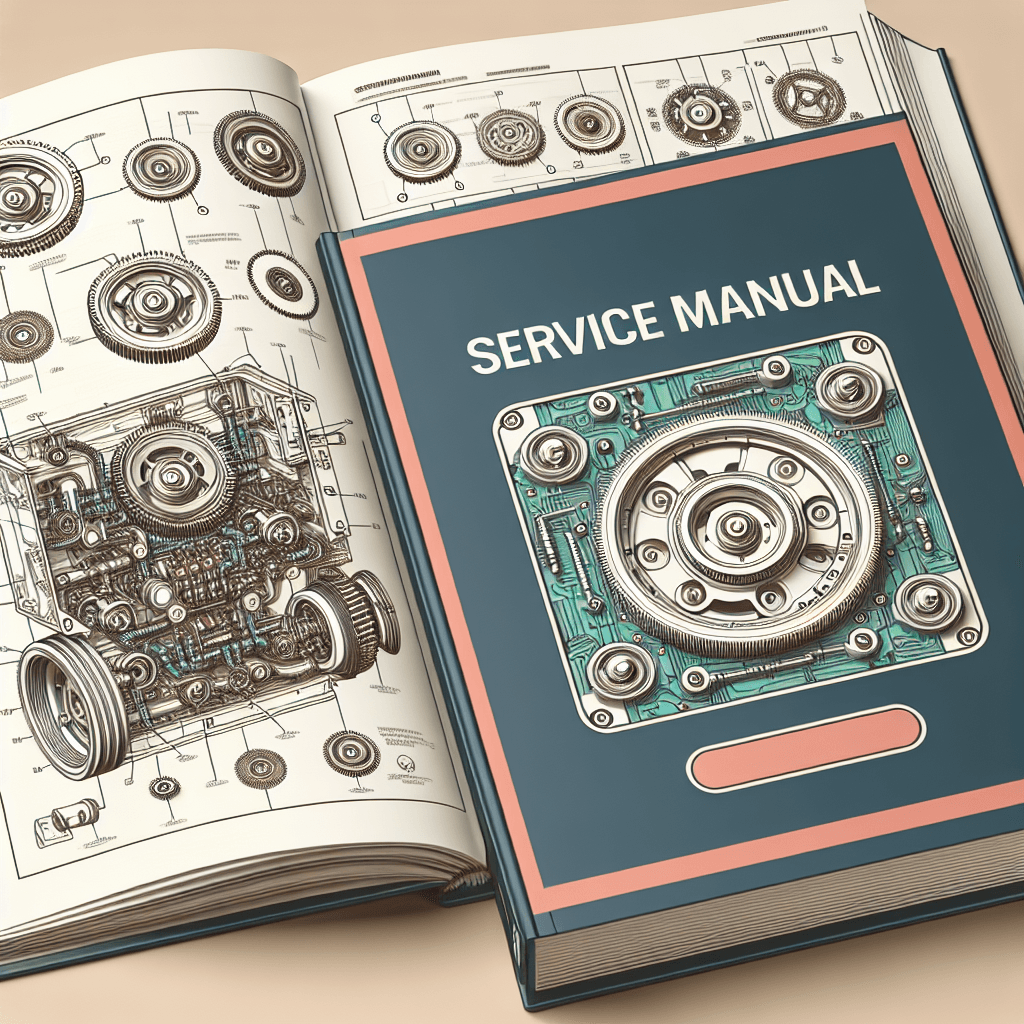
Service manuals are indispensable resources for technicians and engineers, providing detailed instructions on the maintenance and repair of complex machinery. Among the plethora of information contained in these manuals, illustrated diagrams stand out as particularly crucial elements. The inclusion of illustrated diagrams in the Hitachi service manual serves as a testament to their importance, enhancing the usability and effectiveness of these technical guides. In this article, we will explore the significance of diagrams in service manuals, how they enhance clarity, delve into Hitachi’s detailed illustrations, and discuss the benefits of visual aids in technical guides.
Importance of Diagrams in Service Manuals
Illustrated diagrams are pivotal in service manuals because they provide a visual representation of complex systems and components. For technicians dealing with intricate machinery, textual descriptions alone can often be insufficient. Diagrams offer a clear picture of the layout and interconnections of various parts, making it easier for users to understand the structure and function of the equipment. They are especially valuable in identifying the location of components, which can be a challenging task when dealing with dense and compact machinery.
Moreover, diagrams help in troubleshooting and diagnostics. When a machine malfunctions, a diagram can guide a technician to the probable source of the problem, facilitating quicker and more accurate repairs. This not only saves time but also reduces the likelihood of errors, which can be costly in terms of both money and machine downtime. In this way, diagrams play a crucial role in maintaining operational efficiency.
The importance of diagrams is further underscored by their role in training new technicians. For those new to the field, understanding machinery through text alone can be daunting. Illustrated diagrams serve as an educational tool, bridging the gap between theoretical knowledge and practical application. They help trainees visualize the equipment, enhancing their learning experience and enabling them to become proficient more quickly.
Lastly, diagrams in service manuals are essential for ensuring compliance with safety standards. By clearly depicting the correct assembly and disassembly procedures, illustrated diagrams help prevent accidents and injuries. This is particularly important in industries where machinery can pose significant hazards if not handled properly. Thus, diagrams contribute not only to the maintenance of machinery but also to the safety and well-being of those who operate and repair it.
How Illustrated Diagrams Enhance Clarity
Illustrated diagrams enhance clarity in service manuals by breaking down complex processes into understandable visual steps. For technicians who must follow precise procedures, a well-drawn diagram can eliminate confusion by providing a straightforward representation of each step in a process. This visual clarity is particularly beneficial when dealing with intricate machinery that requires assembly or disassembly, as it allows technicians to see exactly how components fit together.
Furthermore, diagrams can convey information that might be cumbersome or verbose in text form. For example, explaining the flow of electrical circuits or hydraulic systems in words can be challenging and open to misinterpretation. However, a diagram can succinctly depict these systems, showing the flow direction and connection points with ease. This not only saves space in the manual but also reduces the cognitive load on the reader, making the information more accessible.
In addition, diagrams can emphasize critical information that might be overlooked in a textual description. For instance, highlighting the orientation of a component or the sequence of steps in a process is more effectively achieved through visual representation. This ensures that technicians are aware of essential details that could affect the success of a repair or maintenance task.
Finally, illustrated diagrams cater to the diverse learning preferences of users. While some individuals may excel at processing written information, others may find visual data more intuitive. By incorporating diagrams, service manuals can accommodate different learning styles, ensuring that all users can comprehend the necessary information effectively. This inclusivity enhances the overall usability of the manual, making it a more valuable resource for a wider audience.
Understanding Hitachi’s Detailed Illustrations
Hitachi is renowned for its meticulous attention to detail, and this is evident in the illustrated diagrams found in their service manuals. Each diagram is crafted with precision, ensuring that every component is accurately represented. This attention to detail is crucial, as it allows technicians to rely on the diagrams for accurate information, reducing the likelihood of errors during maintenance or repair tasks.
The diagrams in Hitachi’s service manuals are not only detailed but also comprehensive. They cover a wide range of components and systems, providing technicians with a complete overview of the machinery. This comprehensive approach ensures that users have access to all the information they need, regardless of the complexity of the task they are undertaking. By covering every aspect of the machinery, Hitachi’s diagrams serve as a reliable reference for technicians.
Moreover, Hitachi’s illustrated diagrams are designed with user-friendliness in mind. They are organized in a logical manner, making it easy for technicians to find the information they need. This logical organization is complemented by clear labeling and annotations, which provide additional context and guidance. This combination of detail and organization makes Hitachi’s diagrams particularly effective in aiding technicians during repair and maintenance tasks.
In addition to their technical accuracy and comprehensiveness, Hitachi’s diagrams are also aesthetically pleasing. The use of color, shading, and perspective adds depth and clarity to the illustrations, making them easy to interpret. This attention to aesthetics, combined with technical precision, sets Hitachi’s diagrams apart as exemplary models of illustration in service manuals.
Benefits of Visual Aids in Technical Guides
Visual aids, such as illustrated diagrams, offer numerous benefits in technical guides, enhancing their overall effectiveness and usability. One of the primary advantages is the facilitation of quicker comprehension. For technicians who often work under time constraints, the ability to quickly grasp complex information through visual representation is invaluable. This efficiency not only saves time but also increases productivity, allowing technicians to complete tasks more swiftly.
Another significant benefit of visual aids is the reduction of errors. By providing a clear and accurate depiction of components and systems, diagrams minimize the risk of misinterpretation and mistakes during maintenance and repair tasks. This is particularly important in high-stakes environments where errors can lead to costly downtime or even safety hazards. Visual aids help ensure that tasks are executed correctly the first time, improving overall reliability.
Visual aids also enhance the accessibility of technical guides. They make the information more approachable for users with varying levels of expertise. Whether a seasoned technician or a novice, visual aids provide a universal language that transcends linguistic barriers and technical jargon. This inclusivity broadens the potential audience for the manuals, making them useful tools for a wider range of users.
Finally, visual aids contribute to the longevity and relevance of technical guides. As technology evolves and machinery becomes more complex, the demand for clear and concise information will only increase. By incorporating visual aids, technical guides can remain relevant and useful, adapting to the changing needs of technicians and engineers. This ensures that they continue to serve as valuable resources for years to come.
In conclusion, illustrated diagrams are a vital component of service manuals, offering clarity, precision, and accessibility that text alone cannot provide. Hitachi’s commitment to detailed and user-friendly illustrations exemplifies the benefits of visual aids in technical guides. By enhancing comprehension, reducing errors, and accommodating diverse learning styles, these diagrams not only improve the efficiency of maintenance and repair tasks but also ensure the safety and reliability of machinery. As industries continue to evolve, the inclusion of illustrated diagrams in service manuals will remain an essential practice, supporting the effective use and maintenance of complex equipment. For more information on Hitachi service manuals, visit Hitachi Manuals.





